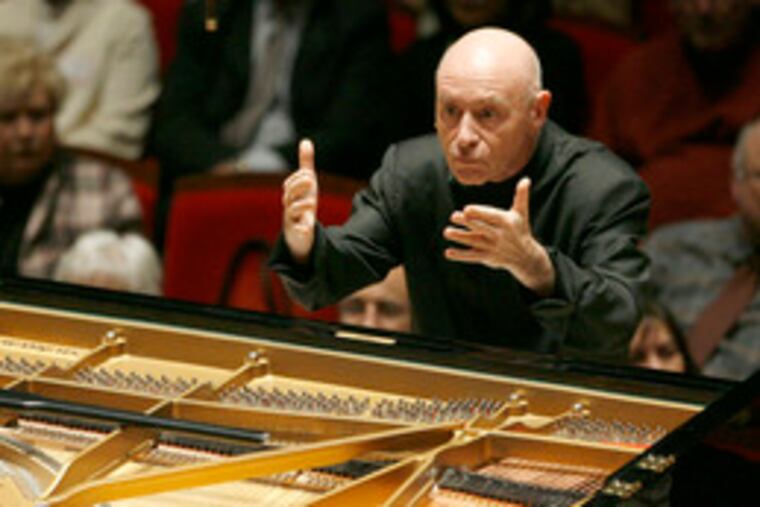Eschenbach as 2 separate artists
What future title, if any, Christoph Eschenbach will hold with the Philadelphia Orchestra is unclear. Pianist-in-residence might be the most valuable one to the city's musical health.

What future title, if any, Christoph Eschenbach will hold with the Philadelphia Orchestra is unclear. Pianist-in-residence might be the most valuable one to the city's musical health.
Eschenbach's last moments on stage at Verizon Hall as the orchestra's music director came not Saturday night on the podium in broad-shouldered Schubert, but Sunday afternoon at the keyboard in the most intimate and powerful message of his tenure.
The three-hour concert, billed as "Christoph Eschenbach and Friends" and produced by the Kimmel Center, presented him as conductor in one work and as pianist in several distinct roles - as a nearly mind-reading accompanist, as a chamber music player whose ideas melded pleasingly with those of his partners, and as a soloist of great interpretive sophistication.
Eschenbach, who leaves with the orchestra today for a three-week tour of Asia, ended his tenure here as a fascinating medium for contradiction. Anyone looking for similarities between the podium personality and the pianist would have found the entire concert rather frustrating: He is as two separate artists.
In the face of nasty interference from cell phones and candy wrappers, he finished the program alone at the piano, hushed and introspective, in Schumann's Kinderszenen. At several points, he dared the audience to lean in and listen by reducing his sound several notches below whisper, even while never letting its presence dim. Some tempos slowed to a crawl - though there were reasons - but mostly his choices about when to move to the next note or chord in a progression had wonderfully subtle expressive implications.
Like it or not, in Eschenbach's view childhood is a place of lurking mystery and inexplicable prolongation. Thinking about the musician's own dark, early years reveals even more and unusually personal layers.
With 16 instrumentalists from the orchestra, he capitalized smartly on the racing drama in Schoenberg's Chamber Symphony No. 1 (Op. 9), one of those pieces that has tonality bursting at the seams and giving great pleasure in the ensuing tension. Double-bassist Harold Robinson was a remarkably agile and resonant voice.
But it was in the role of collaborator that Eschenbach was most modest and useful. He was a deferent accompanist to richly colored mezzo-soprano Rinat Shaham, who stepped in at the last minute for an ill Susan Graham in Schumann's Frauenliebe und -leben (Op. 42).
He indulged string players in Dvorák's Piano Quintet in A Major, B. 155 (Op. 81); their tendency to slow down and admire their own sound had an enervating effect. Beethoven's Quintet for Piano and Winds in E-Flat Major, though, was a triumph of shared vision, with Eschenbach, clarinetist Ricardo Morales, oboist Richard Woodhams, hornist Jennifer Montone, and bassoonist Daniel Matsukawa adhering to a particularly refined concept of sound. Eschenbach took some improvisational liberties – small ones, sneakily, of elegance and taste.
Friends these musicians may be, colleagues just a bit longer. More important are shared musical values, and for performances like this, Eschenbach's return can't come soon enough.